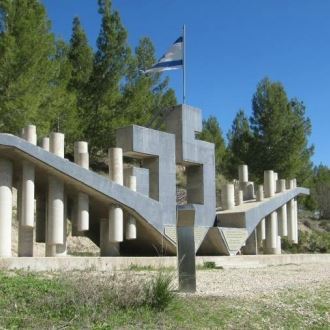Track Beit Jamal Monastery
Hiking
The Route:
The name Beit Jimal means "House of Beauty" in Arabic, the name of an Arab village that existed in the past.
In 1932, a new church was established on the remains of the Byzantine Church in the courtyard of the monastery, St. Stephen's Church.
In the church, there are stained glass windows depicting important events from the life of Jesus in the New Testament such as:
Transfiguration - Moses, and Elijah with Jesus
The birth - Mary and the baby Jesus
Baptism - John and Jesus
The crucifixion of Jesus
The resurrection of Jesus on the third day after the crucifixion
In addition, there are mosaic paintings related to Christian stories such as St. Stephen's stoning, the Last Supper, figures from the Torah of Adam and Eve and the prophets of Israel.
The Women's Monastery:
Built in 1873, five years later, in 1878, it began to serve as an agricultural and boarding school for boys from poor families and orphanages.
Since 1988, the building has served as a monastery for the community of the "Sisters of Bethlehem" nuns from France and Belgium. Some 30 nuns who live in isolation and asceticism are engaged in the design and sale of ceramics.
The monastery has a synagogue-like room, built to bring Christians and Jews closer together.
Concert Hall:
On Saturdays, concerts of classical music are held in the large auditorium.
What more?
A shop for sale of ceramic works is located in front of the main entrance on the left near the parking lot, as part of the life of the nuns in the monastery they design and manufacture the ceramics.
In front of the entrance to the women's monastery - on the left is a monastery for men, where a small number of silent monks live. They make their living mainly from growing grapes and olives and preparing olive oil. Their products can be purchased at the shop at the entrance. Entering the men's monastery is forbidden.
How to get there?
For those coming from the center on Route 1 (Tel Aviv - Jerusalem), turn right at the Sha'ar Hagai interchange onto Route 38 (Sha'ar Hagai - Beit Shemesh - Beit Guvrin) and drive south towards Beit Shemesh, past the traffic lights at the southern entrance of Beit Shemesh, and continue on the journey for about 2 km, until the brown signs that show a left turn to Beit Jimal.
Away from the bustle of the city and traffic jams, the trip to the monastery is a 1.7 km road that climbs and curls moderately to the right, crosses an ancient and amazing Tuscan olive grove until the monastery is revealed at the height of its splendor.
- Type
- Hiking
- Region
- Judea and Samaria
- Near to
- Beit Shemesh
- Length
- About an hour
- Duration
- About half a kilometer
- Recommended season
- Spring, Summer, Autumn, Winter
- Difficulty level
- Easy
- Starting point
- A parking lot next to the monastery (map)
- Ending point
- A parking lot next to the monastery (map)
- Special equipment
- Walking shoes, hat, water, sunscreen
- Map
- Map of Trails No. 9 - Introduction to Jerusalem
- Parking
- Free Parking
- Circular
- Circular
- Drinkable water
- Drinkable water
- Bathing water
- Bathing water
- Suitable for children
- Suitable for children
- Picnic suitable
- Picnic suitable
Similar trails







Nearby attractions







Nearby restaurants







